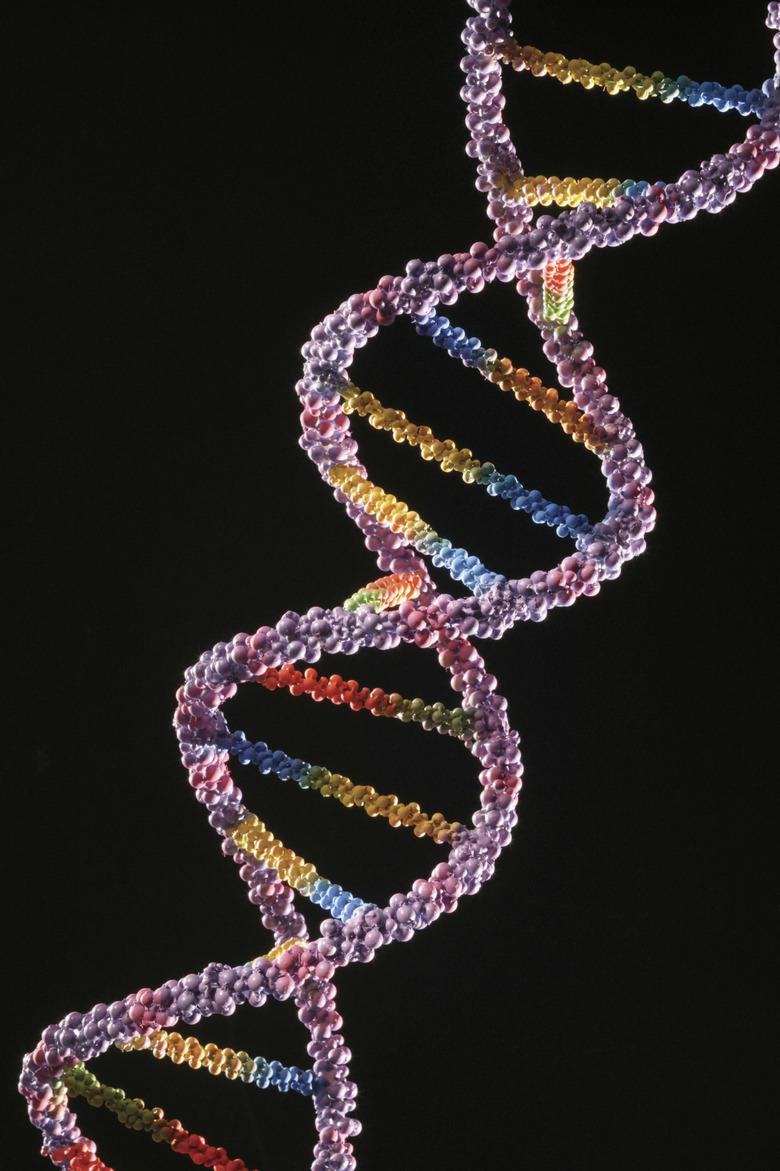What Is The Complementary Base Pairing Rule?
Deoxyribonucleic acid (DNA) is what codes for all cellular genetic information on Earth. All cellular life from the smallest bacteria to the largest whale in the ocean uses DNA as their genetic material.
**Note:** Some viruses use DNA as their genetic material. However, some viruses use RNA instead.
DNA is a type of nucleic acid made up of many subunits called nucleotides. Each nucleotide has three parts: a 5-carbon ribose sugar, a phosphate group and a nitrogenous base. Two complementary strands of DNA come together thanks to hydrogen bonding between the nitrogenous bases that allows DNA to make a ladder-like form that twists into the famous double-helix.
It's bonding between the nitrogenous bases that allows for this structure to form. In DNA, there are four nitrogenous base options: adenine (A), thymine (T), cytosine (C) and guanine (G). Each base can only bond with one other, A with T and C with G. This is called the complementary base pairing rule or Chargaff's rule.
The Four Nitrogenous Bases
The Four Nitrogenous Bases
In DNA nucleotide subunits, there are four nitrogenous bases:
1. **Adenine (A)** 2. **Thymine (T)** 3. **Cytosine (C)** 4. **Guanine (G)**
Each of these bases can be divided into two categories: purine bases and pyrimidine bases.
Adenine and guanine are examples of purine bases. This means their structure is a nitrogen-containing six atom ring joined with a nitrogen-containing five atom ring that share two atoms to combine the two rings.
Thymine and cytosine are examples of pyrimidine bases. These bases are made up of a single nitrogen-containing six atom ring.
**Note:** RNA replaces thymine with a different pyrimidine base called uracil (U).
Chargaff's Rule
Chargaff's Rule
Chargaff's rule, also known as the complementary base pairing rule, states that DNA base pairs are always adenine with thymine (A-T) and cytosine with guanine (C-G). A purine always pairs with a pyrimidine and vice versa. However, A doesn't pair with C, despite that being a purine and a pyrimidine.
This rule is named after the scientist Erwin Chargaff who discovered that there are essentially equal concentrations of adenine and thymine as well as guanine and cytosine within almost all DNA molecules. These ratios can vary between organisms, but the actual concentrations of A are always essentially equal to T and same with G and C. For example, in humans, there's approximately:
- 30.9 percent Adenine
- 29.4 percent Thymine
- 19.8 percent Cytosine
- 19.9 percent Guanine
This supports the complementary rule that A must pair with T and C must pair with G.
Chargaff's Rule Explained
Chargaff's Rule Explained
Why is this the case, though?
It has to do both with the **hydrogen bonding** that joins the complementary DNA strands along with the available space between the two strands.
Firstly, there are about 20 Å (angstroms, where one angstrom is equal to 10-10 meters) between two complementary strands of DNA. Two purines and two pyrimidines together would simply take up too much space to be able to fit in the space between the two strands. This is why A cannot bond with G and C cannot bond with T.
But why can't you swap which purine bonds with which pyrimidine? The answer has to do with hydrogen bonding that connects the bases and stabilizes the DNA molecule.
The only pairs that can create hydrogen bonds in that space are adenine with thymine and cytosine with guanine. A and T form two hydrogen bonds while C and G form three. It's these hydrogen bonds that join the two strands and stabilize the molecule, which allows it to form the ladder-like double helix.
Using Complementary Base Pairing Rules
Using Complementary Base Pairing Rules
Knowing this rule, you can figure out the complementary strand to a single DNA strand based only on the base pair sequence. For example, let's say you know the sequence of one DNA strand that is as follows:
AAGCTGGTTTTGACGAC
Using the complementary base pairing rules, you can conclude that the complementary strand is:
TTCGACCAAAACTGCTG
RNA strands are also complementary with the exception that RNA uses uracil instead of thymine. So, you can also infer the mRNA strand that would be produced from that first DNA strand. It would be:
UUCGACCAAAACUGCUG
Cite This Article
MLA
Walsh, Elliot. "What Is The Complementary Base Pairing Rule?" sciencing.com, https://www.sciencing.com/complementary-base-pairing-rule-8728565/. 15 July 2019.
APA
Walsh, Elliot. (2019, July 15). What Is The Complementary Base Pairing Rule?. sciencing.com. Retrieved from https://www.sciencing.com/complementary-base-pairing-rule-8728565/
Chicago
Walsh, Elliot. What Is The Complementary Base Pairing Rule? last modified August 30, 2022. https://www.sciencing.com/complementary-base-pairing-rule-8728565/
